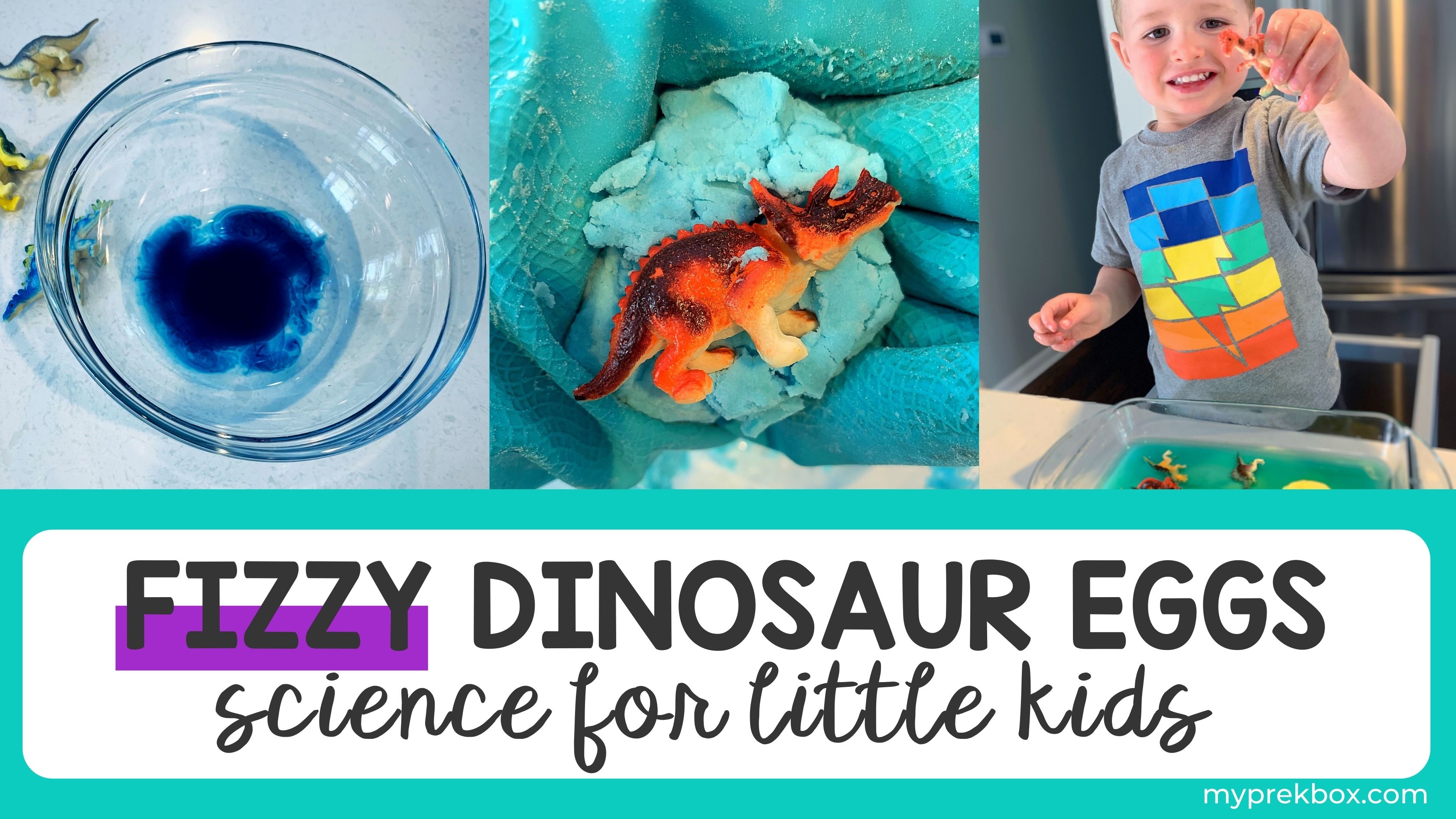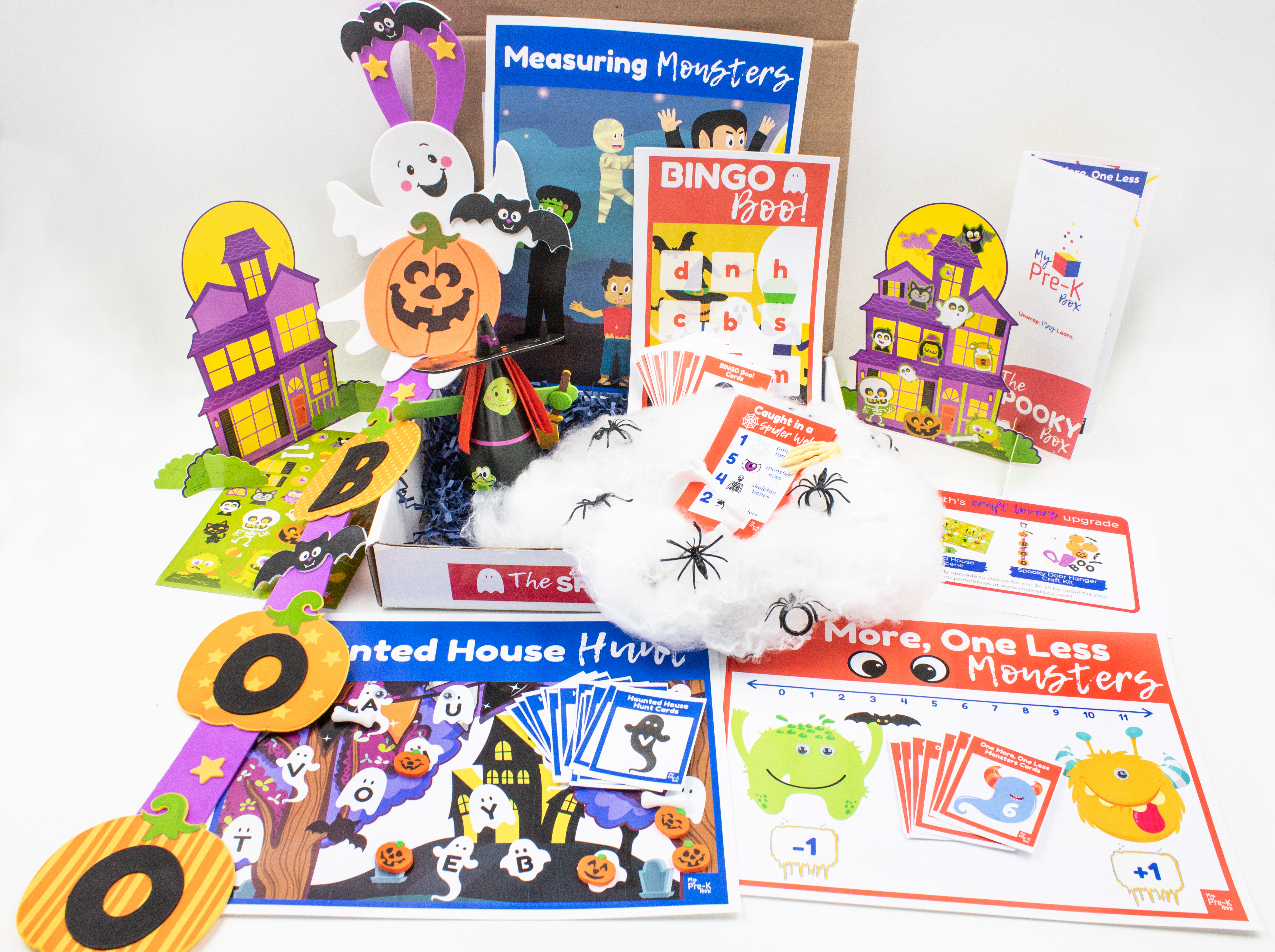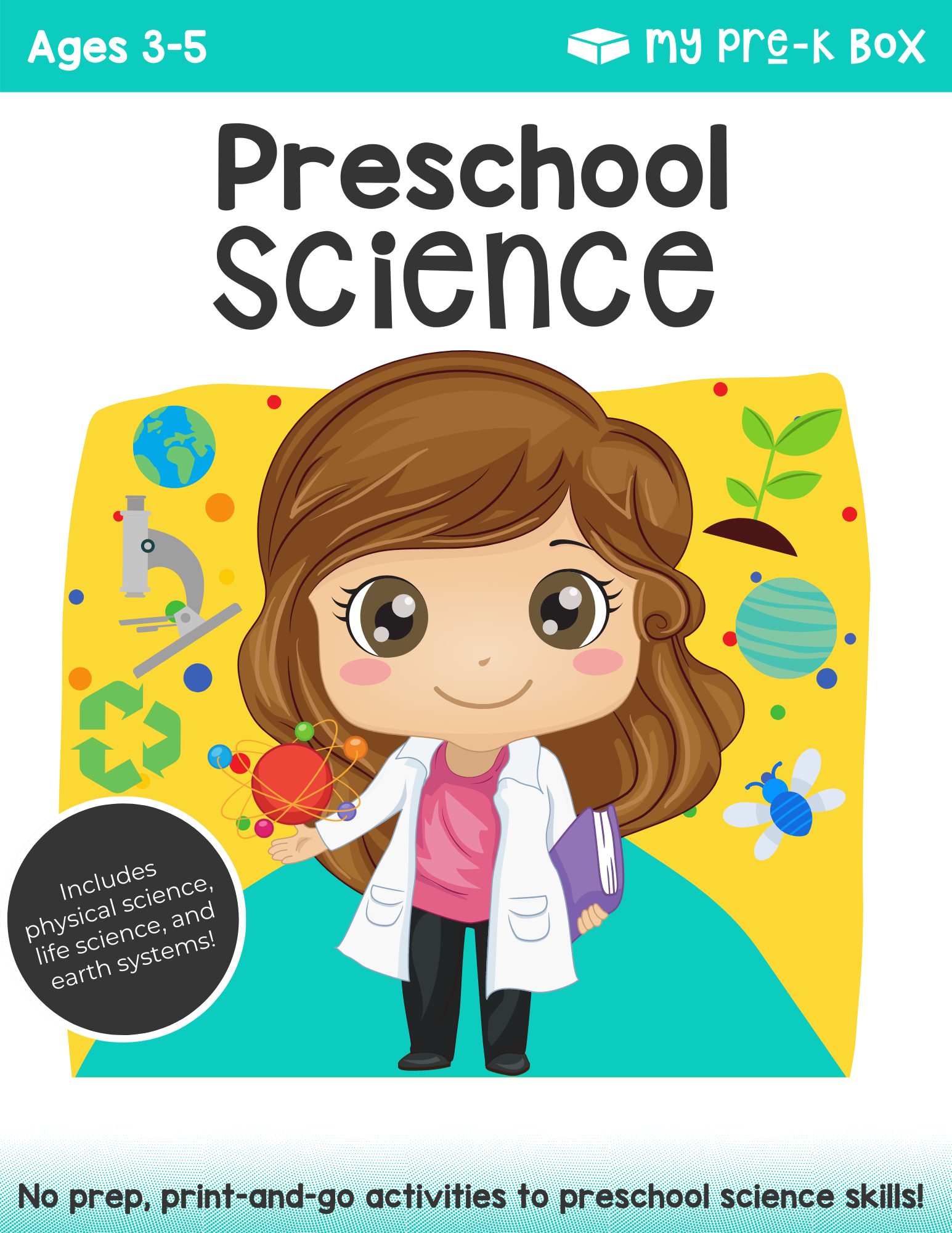There are a few things for certain that will interest children between the ages of three to five: big reactions, ‘magic,’ new discoveries, and dinosaurs. On second thought, maybe those are all pretty exciting regardless of age!
In this latest educational activity, we are combining all of those elements to create a chemical reaction your child will be buzzing about for days—and likely asking to do again and again. Let’s make fizzy dinosaur eggs!
Dinosaurs are fascinating to children because they are larger than life and allow kids to tap into their imaginations to envision how dinosaurs walked, yelled, and moved. This My Pre-K Box activity taps into that sense of wonder and adds a bubbling, fizzy chemistry lesson that your child has complete control over.
My Pre-K Box: The Best Educational Subscription Box for Preschoolers
My Pre-K Box is an educational subscription box for preschoolers aged 3-5! We deliver the most fun play-based preschool learning available! Each box has its own unique theme and is filled with different learning activities to target math and literacy skills. Your kids will have fun exploring the new activities, and you will delight in the fact you are helping them with essential Kindergarten readiness skills!
Looking for More STEM Preschool Acitivites?
FREE Preschool Science Fun Pack
Making the Dinosaur Eggs
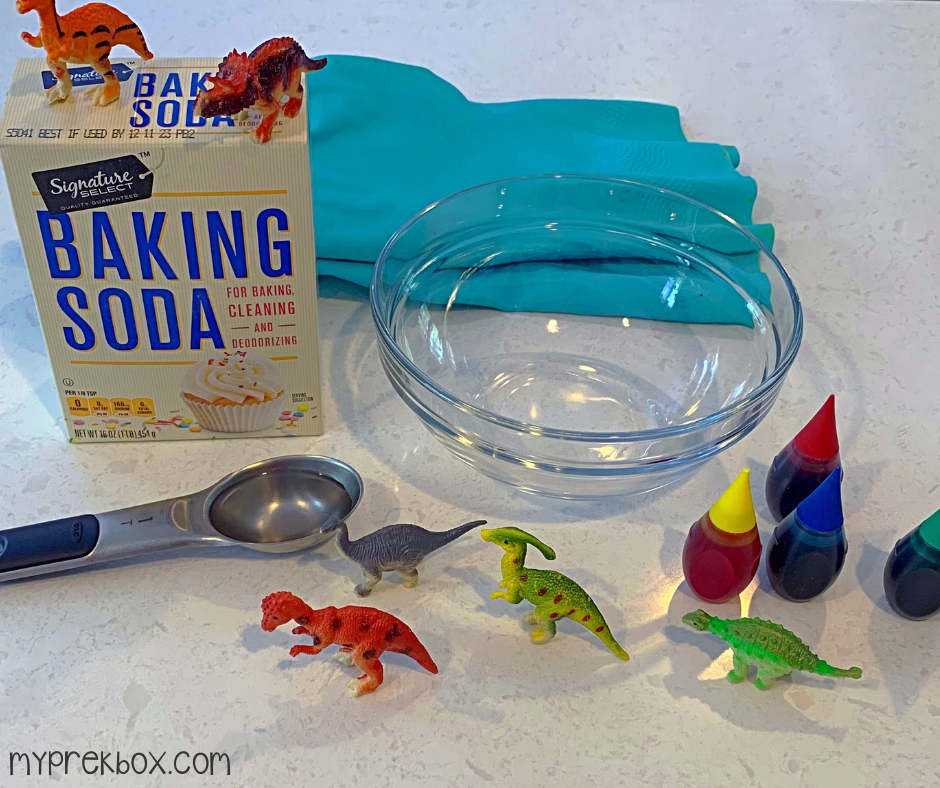
Materials:
- Baking soda (1 box of 16oz baking soda makes 4 eggs)
- Food dye
- Water
- Mixing bowl
- Dropper or syringe
- White vinegar
- Casserole dish
- Small dinosaur toys
- Gloves
- Parchment paper
- Optional: Table covering; this can get messy!
Instructions:
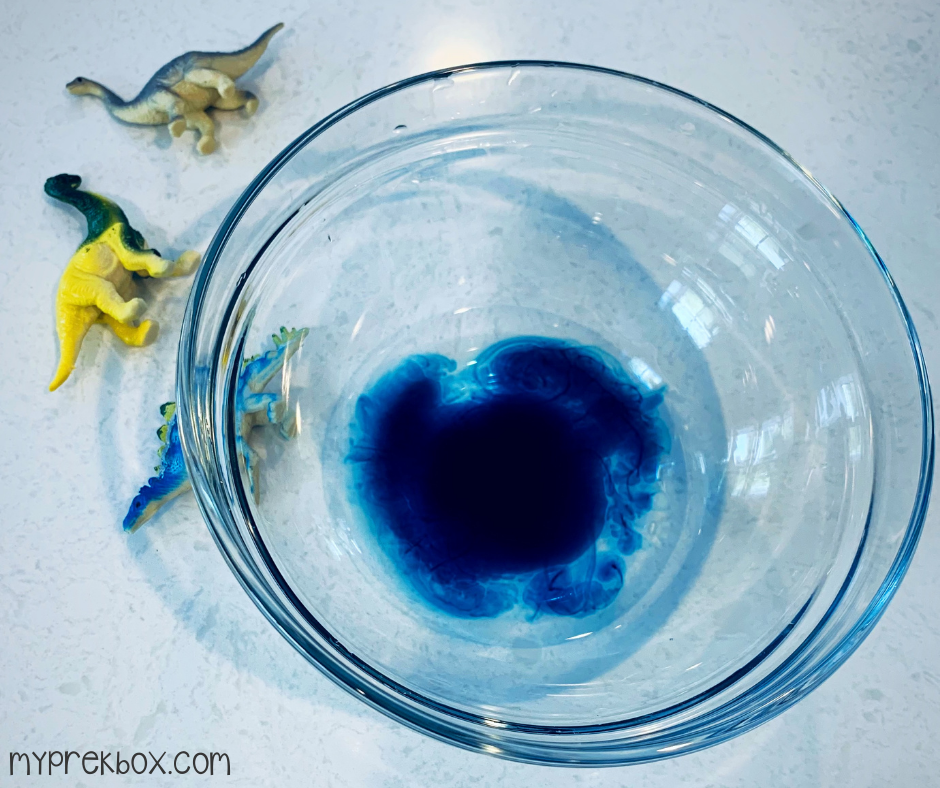
Step 1 Add 2 drops of food dye and 2 tablespoons of water into a small bowl. You can also skip the dye to make white eggs.
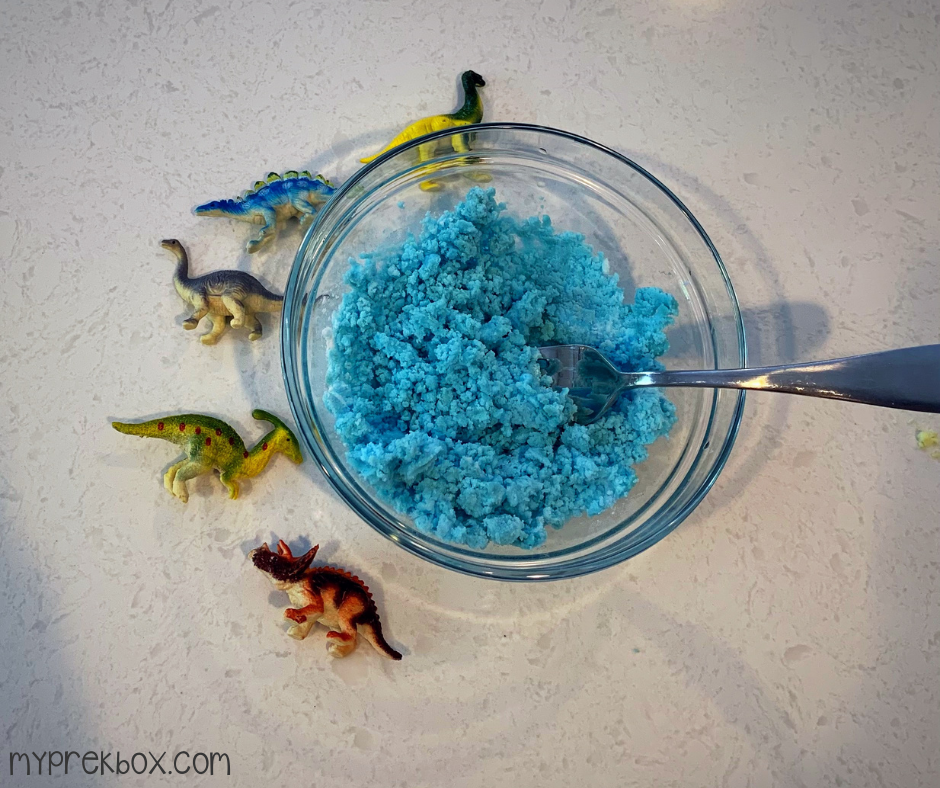
Step 2 Add 1/2 cup of baking soda to the bowl. Mix until it forms a sticky, slightly crumbly paste. Repeat this step for each color you would like to make. If you find the mixture feels too wet to mold, add a little more baking soda. To make a larger batch of just one color, mix 1 cup of baking soda with 1/4 cup of water.
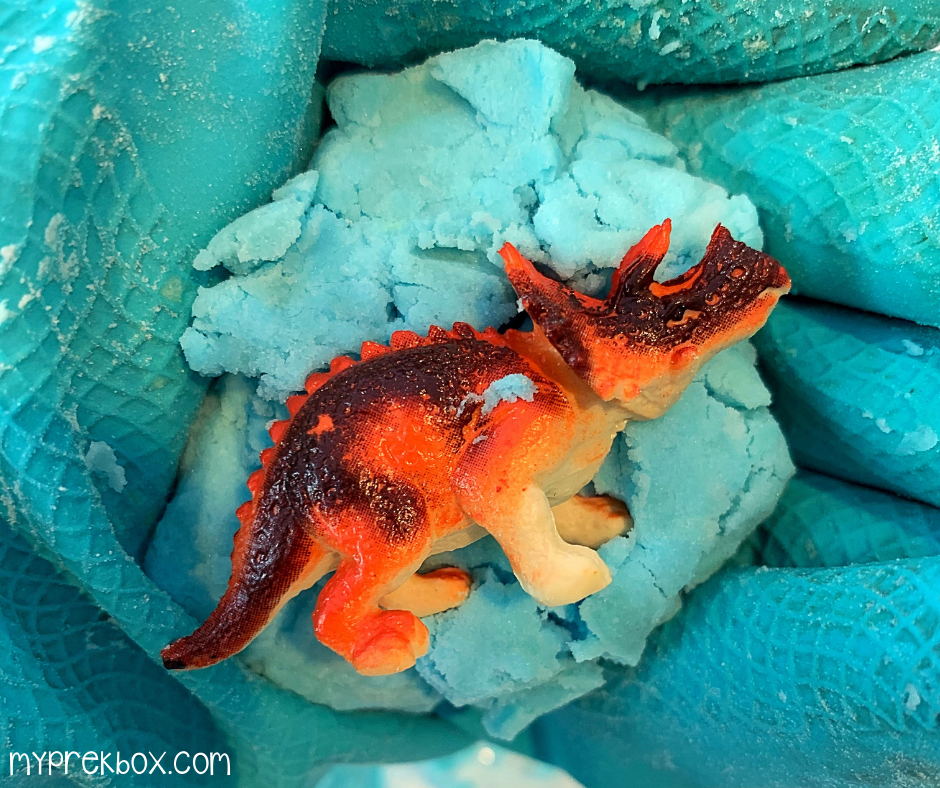
Step 3 Take half of the baking soda mixture into your gloved hand and place a mini dinosaur inside. Add the rest of the mixture on top of the dinosaur and use your hands to mold it into an egg shape. It’s recommended to use gloves for this step as the dye can stain hands.
Step 4 Optional: Line a plate or cookie sheet with parchment paper, place the eggs on the parchment paper, and set it in the freezer for at least 15 minutes. The freezing will help keep the eggs together.

Step 5 Place the eggs in a casserole dish or disposable pan. Fill the dropper with vinegar and squirt it onto the eggs to initiate the bubbling. Repeat the process of dropping vinegar onto the eggs to reveal the dinosaurs inside.
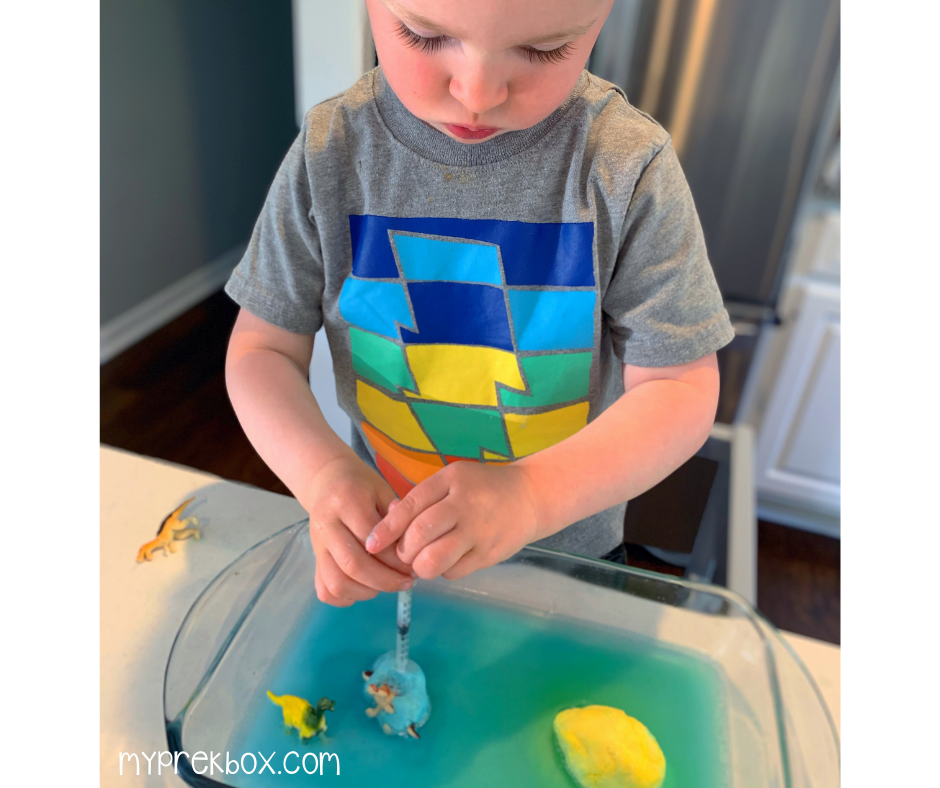
What is the science involved?
As you and your child complete the steps to create the fizzy dinosaur eggs, you will soon discover that the bubbling caused by adding vinegar to baking soda creates an excited reaction from your child. But what chemical reaction is at play?
This activity is an example of an acid/base reaction. The baking soda (sodium bicarbonate, chemical formula NaHCO3) serves as the base while the vinegar (acetic acid, chemical formula CH3COOH) is the acid. The initial chemical reaction when the two substances mix creates carbon dioxide, water, and sodium acetate. The formulation is unstable, however, and quickly breaks down into carbon dioxide (CO2) and water. The foaming is created as the gas leaves the water. The more vinegar you add, the more the baking soda breaks down, eventually revealing the dinosaur inside.
What other skills will your child learn?
At My Pre-K Box, we’re always looking for opportunities to help children practice their fine and gross motor skills. Adding the drops of dye to the water, mixing the baking soda, and squirting the finished eggs with vinegar are great ways to practice those all-important fine motor skills. These are some of the same skills that will help your child learn to master buttoning a shirt and holding a pencil. Forming the eggs from the baking soda mixture and covering the mini dinosaur also takes a great deal of concentration and might be an entirely new experience for your child.
During the activity, your child will also have the opportunity to practice measuring, following directions, and pre-reading—all significant skills for children at a pre-kindergarten level.
Extend the Learning Opportunities
While the main event is the fizzing of the dinosaur eggs, getting your child involved in creating the eggs is the perfect setting to talk about color mixing. Use 1 to 2 drops of complementary colors to go beyond primary-colored eggs. What happens when your child adds yellow to blue? Or red to yellow?
You can also play around with the texture of the baking soda mix for a sensory component. Add more water to the mixture and ask your child to take note of how it changes. Then add more baking soda and watch as the mixture becomes more crumbly and separated.
This activity also presents a wonderful opportunity to sprinkle in some facts about dinosaurs. Preschool-aged children retain more information when it is part of a fun event or project. Hence the entire concept of My Pre-K Box! Start simple with a few key facts about each dinosaur that hatches, such as its name and whether it was a herbivore (exclusively ate plants), a carnivore (exclusively ate meat), or an omnivore (ate both plants and meat).
For the budding paleontologist in your life, feel free to go more in-depth. Talk about where the dinosaur resided (near water, in the desert, etc.); if it swam, flew, or walked; and the period it hailed from (Triassic, Jurassic, or Cretaceous).
Kid-friendly Dinosaur Facts
-
The name dinosaur means frighteningly big lizard.
-
Dinosaurs lived on earth for about 245 million years.
-
The giant plant-eating sauropods were the biggest and heaviest dinosaurs to walk the earth.
-
Not all dinosaurs were giant. The smallest were about the size of chickens, and the average dinosaur was about the size of a small car.
-
Dinosaur fossils have been uncovered on all seven continents.
-
Some large dinosaurs lived as long as 300 years.
-
There are roughly 700 known species of extinct dinosaurs.
-
Birds are a kind of dinosaur because they share a common ancestor with non-avian dinosaurs.
Let's Connect!
We absolutely LOVE seeing your preschoolers learning through play! Please take photos and videos of your child's fizzy dinosaur eggs and share your photos with us on Facebook and Instagram!
Also, if you aren't already, be sure to follow us on Facebook and Instagram for more fun activities to do at home with your little ones!
Haven't yet tried My Pre-K Box?
|
My Pre-K Box is the best monthly subscription box for kids ages 3-5.
Everything you need to create, play, laugh, and learn!
|
